A Rifleman's Optics
Konuspro LZ-30 2.5-10x 50mm
column By: John Haviland | November, 18
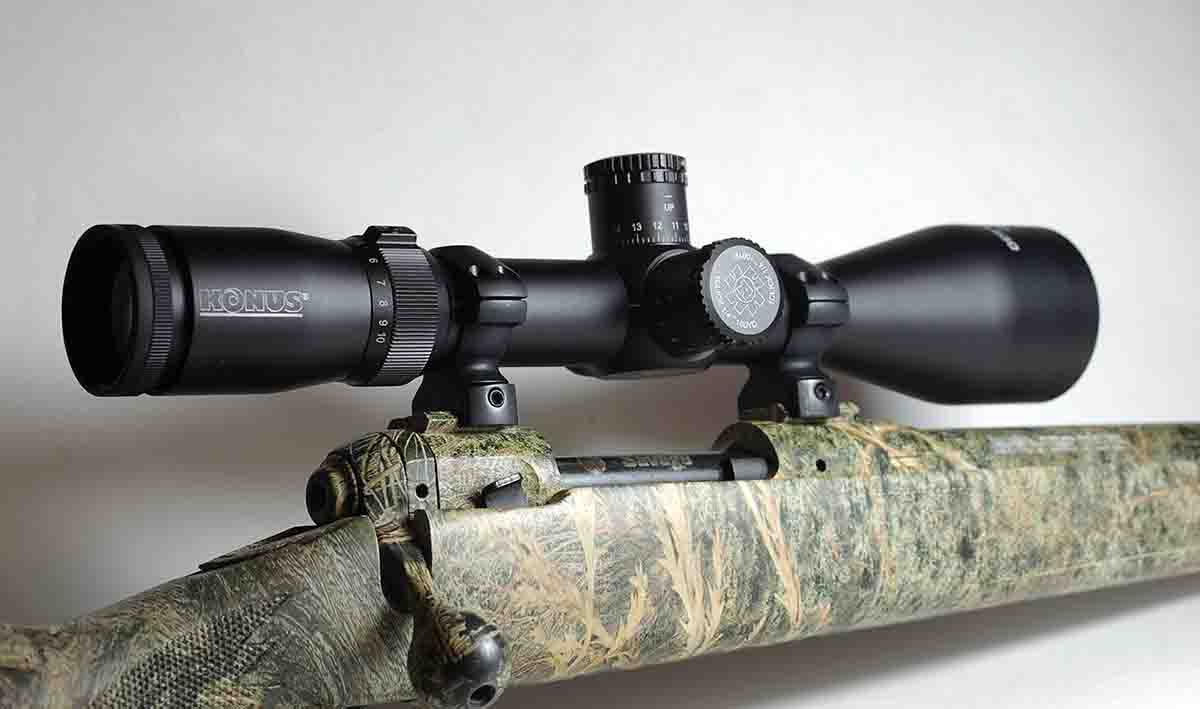
The Konuspro is a big scope with a weight of 22.5 ounces and a length of 12.9 inches. High rings are required for its 50mm objective lens to clear a rifle barrel. With the scope in Konus’ clamp-on, one-piece rings and bases, the whole outfit weighed 2 pounds.
The scope has a couple of unique features. Its 30/30 reticle consists of thick lines that thin out while leading toward a “floating” illuminated cross at the center. The center of the cross fits in a .5-inch square at 100 yards with the scope set at 10x. A dial on the left side of the 30mm main tube houses a battery to illuminate the cross portion of the reticle. The dial has five intensity settings each for red or blue; red showed up well during full daylight. The plain cross center of the reticle disappeared in dim light, but the blue illumination made it visible.
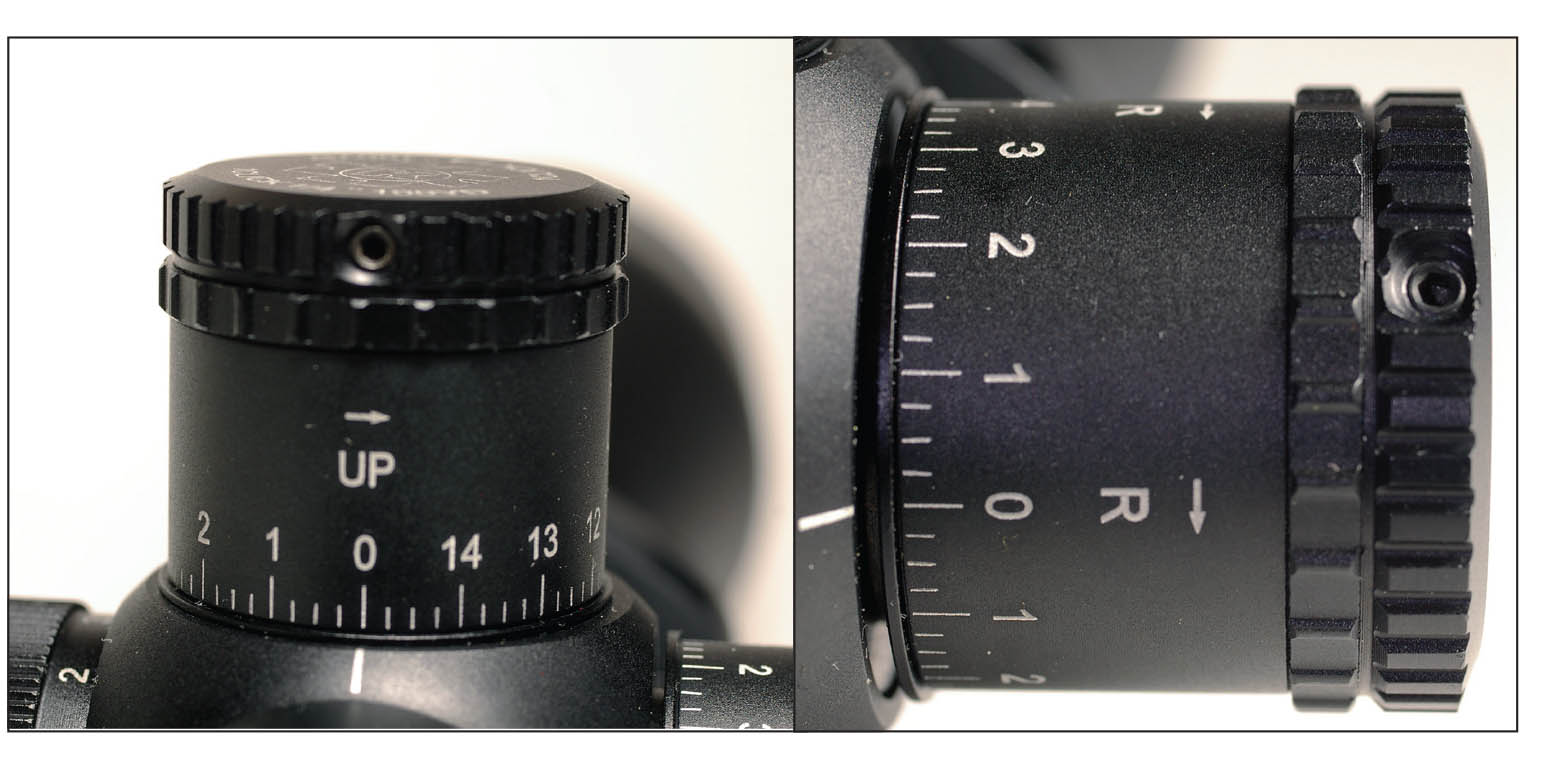
I tested the scope every which way to literally see if I was missing anything. The scope was given a 30-minute bath in a sink of hot water. No telltale bubbles rose from the scope. The wet scope was then placed in the freezer for two hours. It came out with a coat of frost on the outside. The center of the lenses are the thickest and retain the cold the longest, and that is where any moisture inside a scope shows up in the form of frost. A small circle of frost appeared on the inside of the objective lens, but it disappeared when the scope thawed out. No moisture appeared when I put the scope right back into hot water. The illumination dial, turrets and magnification dial turned freely. The Konus’ magnification dial is turned to the left to increase power. Most scopes’ magnification adjustments operate in the opposite direction.
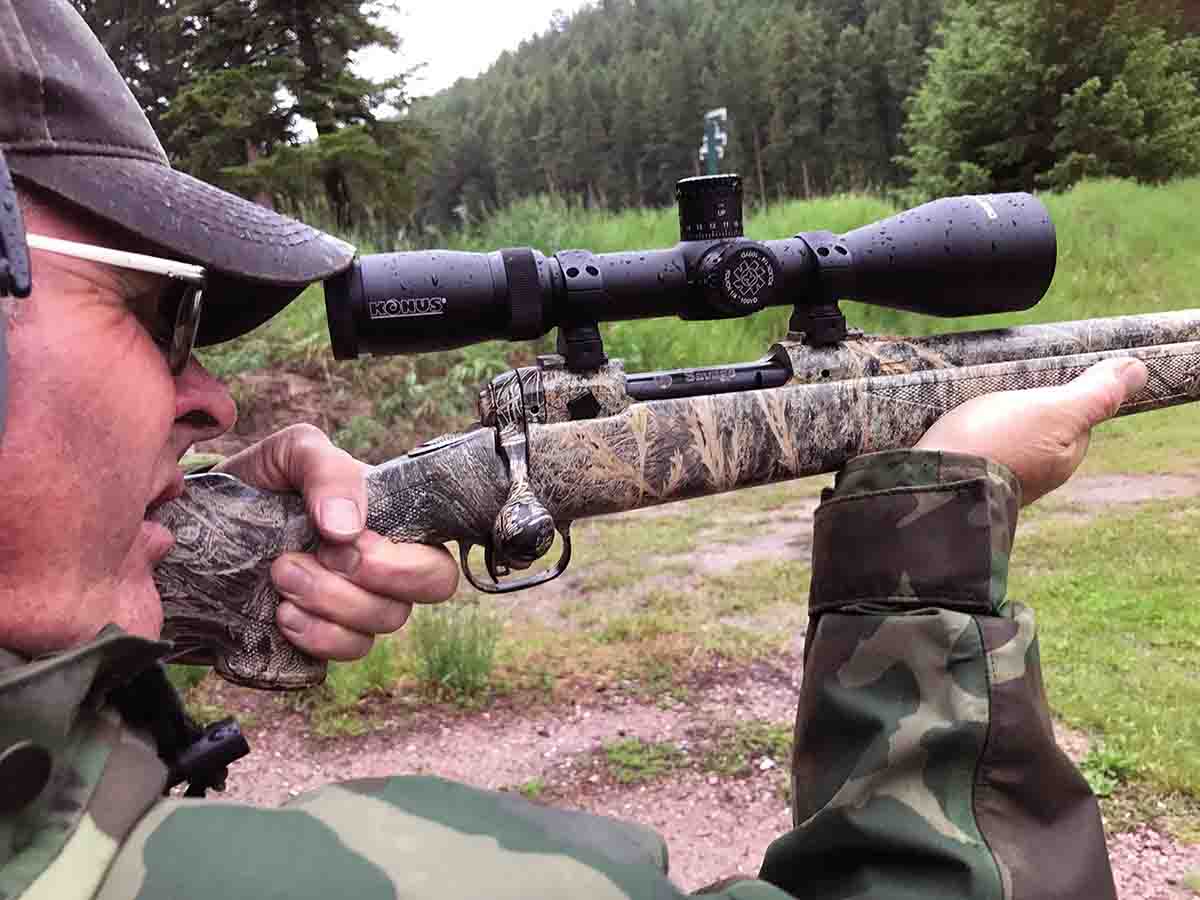
I used a Bushnell Boresighter to align the Konus scope’s reticle with the bore of the Savage rifle before heading out to shoot the pair. The scope has a focus ring that does not lock, but the ring is fairly stiff to turn and should remain in place. When viewing a white target, I turned the focus ring back and forth until the reticle and the view of the target squares was in sharp focus.
The Savage was loaded with Hornady Frontier .223 Remington cartridges with Hornady 68-grain BTHP Match bullets. The midmorning was pleasant, with a slight breeze cooling the rising temperature. Luck of luck, the first bullet hit only half an inch to the right of point of aim at 100 yards. Two clicks left on the windage dial brought the following shots right on aim.
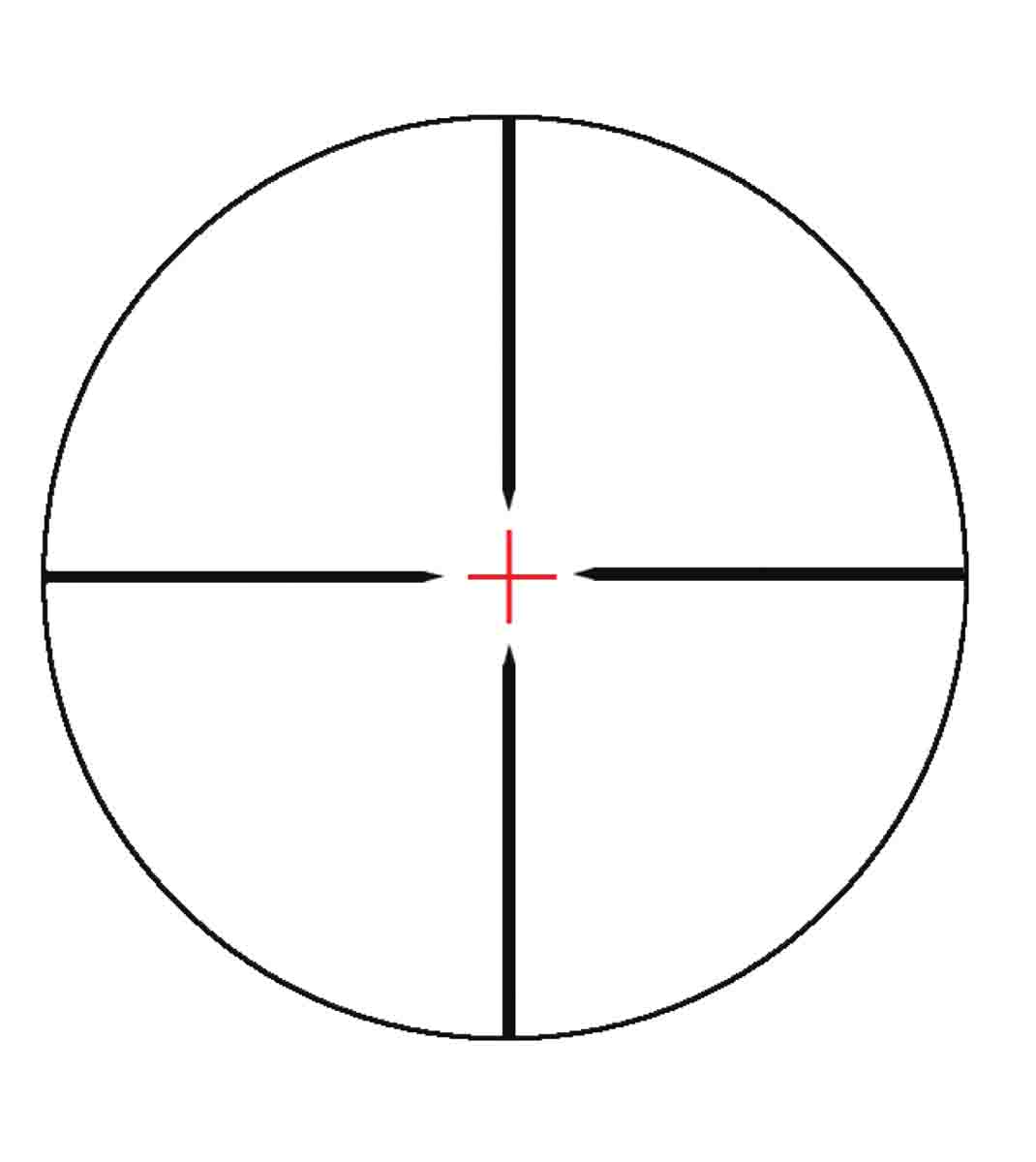
The elevation and windage turrets are tall and are made for dialing; each provides 60 inches of adjustment. The turrets are locked in place when pushed down, and pulling them up frees them to make adjustments. The turrets are marked with .25-inch hash marks with 15 inches of adjustment per revolution. Each movement produces an audible click. After the scope was sighted in to hit on aim at 100 yards, 37 inches of upward adjustment remained on the elevation turret.
After sighting in, the zero marks on both dials were aligned with the witness marks on the main tube. Loosening two setscrews on each turret with a 1.5mm hex wrench allowed unscrewing and removing the caps. A threaded ring was unscrewed on each turret. The turrets were pulled off, aligned, and the rings and caps were screwed back on. The turrets have no zero lock or lines to indicate which rotation of the dial the scope is set on.
To test the reliability of the turret adjustments, three shots were taken at 100 yards, resulting in a .97-inch group. The elevation and windage turrets were then turned back and forth for a full minute. With the turrets turned back to their original settings, three more shots formed a .92-inch group. All six bullets would have shaped a group slightly less than an inch. The center of the last three bul-lets was about .25 inch to the right of the middle of the first three shots.
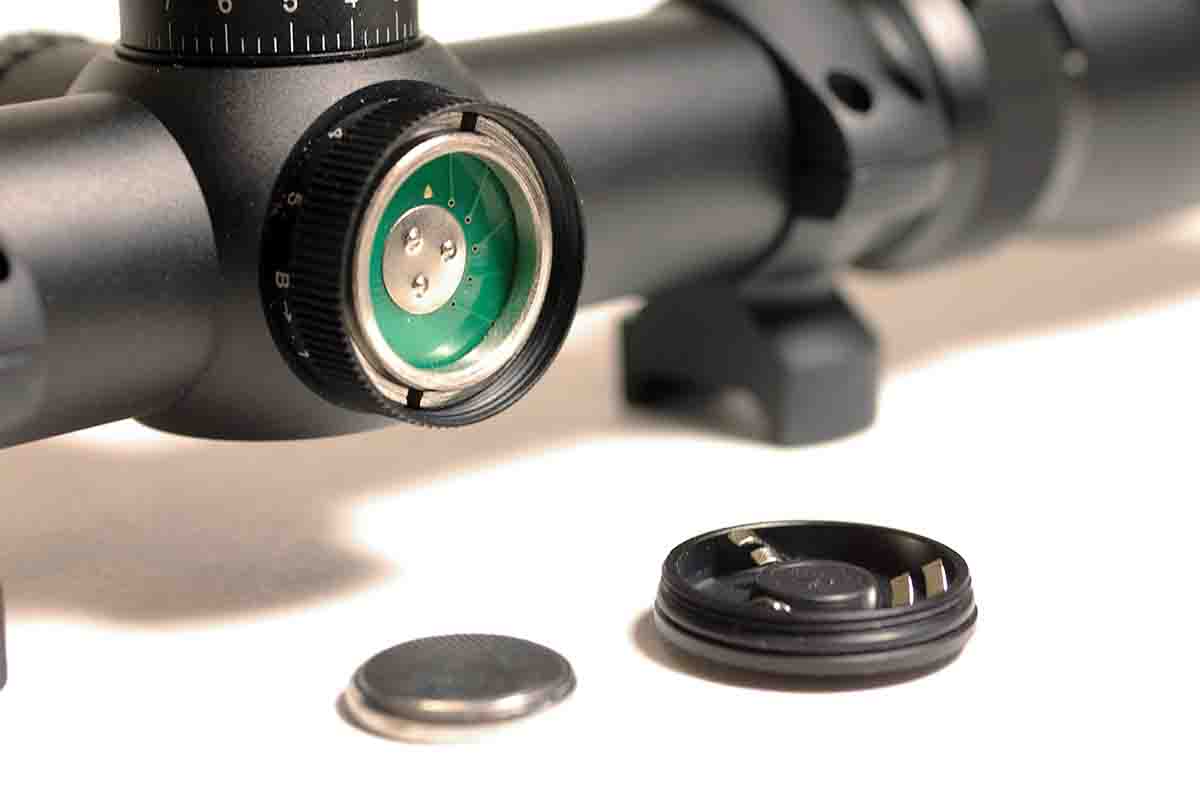
Leupold’s VX-Freedom 3-9x 40mm scope sells for about the same price as the Konus. The Leupold was able to resolve one set of bars larger than the Konus scope. That element of bars remained visible at all edges of the Leupold’s view.
So the Konus scope defined one smaller element of bars than the Nikon and Leupold scopes, which might be attributed to the Konus’ larger objective lens. However, the Konus scope suffered slightly at the edges of its field of view.
How to best test a scope over a few days to ensure its dependability years down the road remains a mystery. I could have extensively shot my .375 Ruger with the Konus scope mounted on it to test its – and my own – ruggedness. But I have enough trouble these days remembering where I put my wallet. Konus provides a two-year warranty on its scopes. For more information, visit konus.com.


